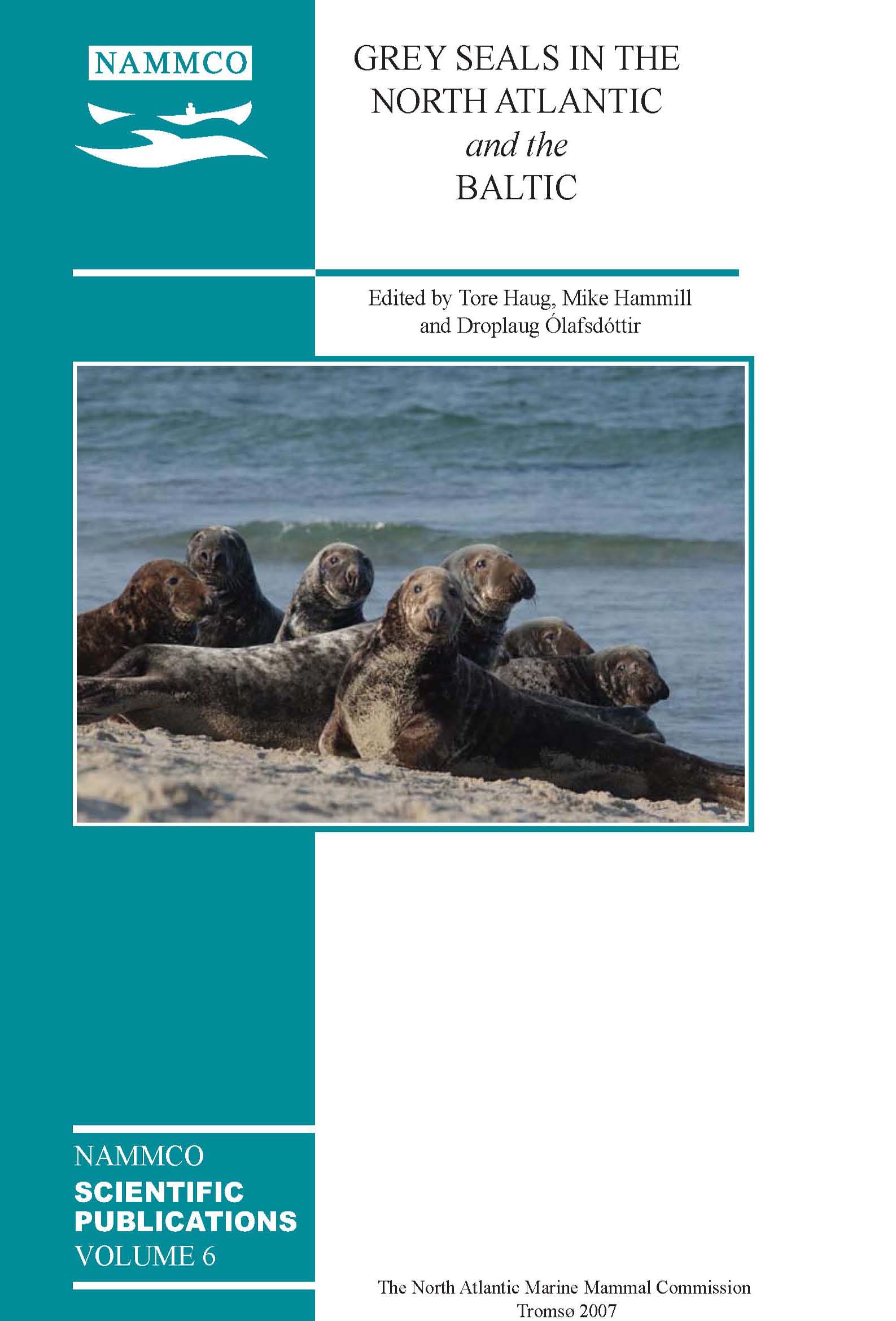Growth and reproduction in the Icelandic grey seal
DOI:
https://doi.org/10.7557/3.2730Keywords:
grey seals, Iceland, growth, reproductionAbstract
Growth and reproduction in grey seals (Halichoerus grypus Fabricius, 1791) from Iceland were examined. The oldest Icelandic grey seals obtained were a 36 year old female and a 23 year old male. The longest animals were a 255 cm 13 year old male, and a 230 cm 20 year old female. The heaviest grey seal was an 11 year old male weighing 310 kg. The heaviest female was a 20 year old female that weighed 240 kg. Females reached an asymptotic standard length and weight of 200 (95% CI 196 - 204) cm and 164 (95% CI 157 - 171) kg. Males attained an asymptotic standard length of 243 (95% CI 232 - 254) cm and mass of 279 (95% CI 254 - 306) kg. Investigations of the ovaries and testes indicate that, by the time that females were seven years old, over 90% were pregnant. The average age of sexual maturity of females was 4.0 years (95% CI 3.59 - 4.41) and the average age of first pupping was 5.3 (95% CI 4.95 - 5.72). Average age of sexual maturity for males was 4.9 (95% CI 4.43 - 5.40). Seven out of 8 grey seal males had fully developed testes at the age of 7. All males, 8 years of age and older were mature. Adult (5+ years) females and males are fattest in the summer right before breeding in the autumn, but leanest in the winter after breeding and mating, and in the spring after moulting.Downloads
Published
2007-01-01
How to Cite
Hauksson, E. (2007). Growth and reproduction in the Icelandic grey seal. NAMMCO Scientific Publications, 6, 153–162. https://doi.org/10.7557/3.2730
Issue
Section
Articles





